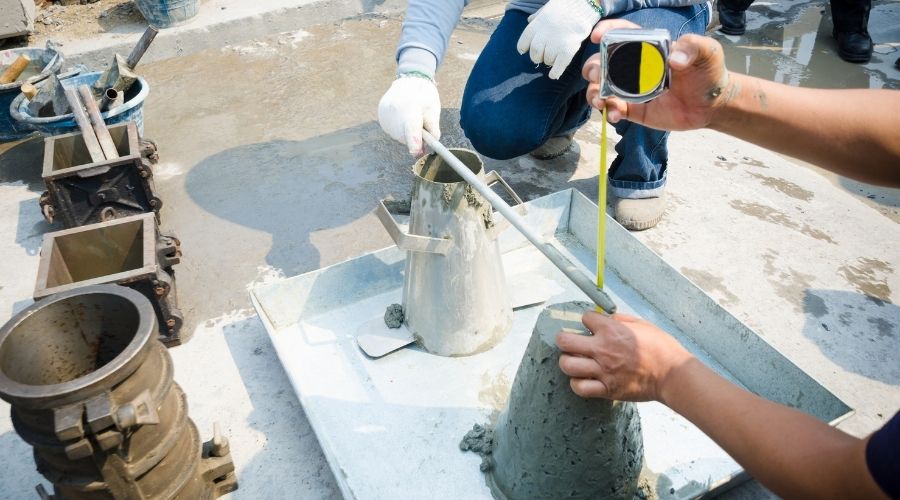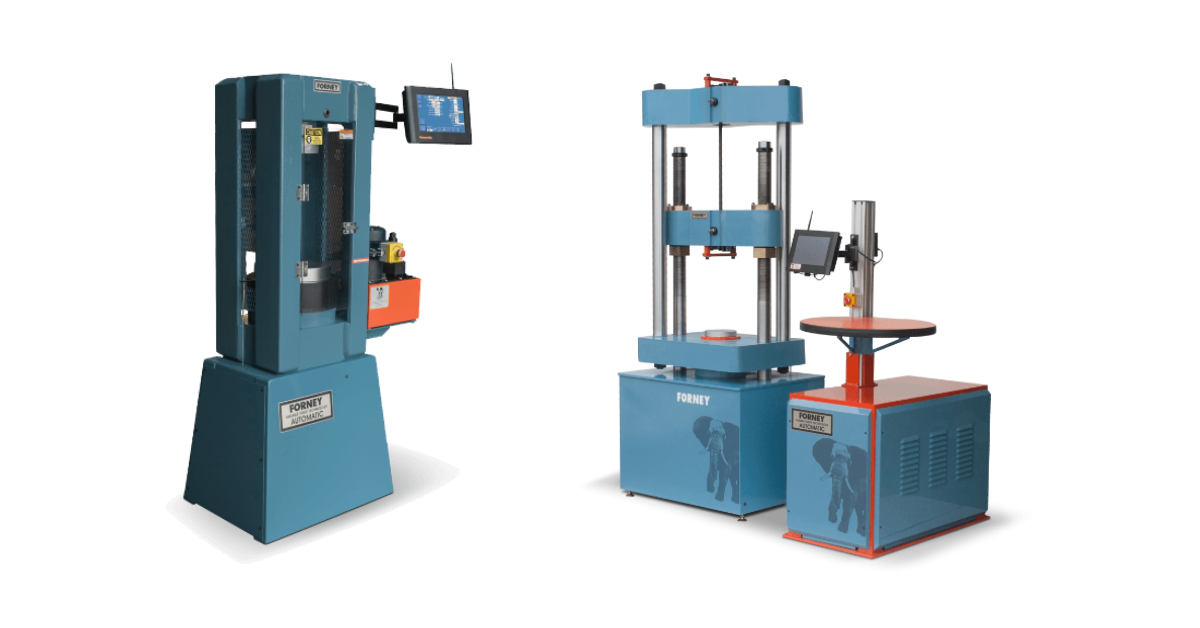Concrete Testing Near Me for Task Self-confidence: Quality Control in Action
Wiki Article
Beyond the Surface area: Innovations in Concrete Screening Strategies
Concrete is among the most commonly used building and construction materials, understood for its strength and toughness. Nevertheless, making certain the top quality and reliability of concrete frameworks needs complete screening and evaluation. Over the years, developments in technology have paved the way for ingenious techniques that exceed the surface of concrete. From sophisticated imaging innovations and non-destructive screening methods to modern sensors and keeping track of systems, the field of concrete screening has actually experienced exceptional development. That's not all - the combination of robotic and automation options, coupled with the use of man-made intelligence, has additionally revolutionized the means we analyze concrete frameworks. In this discussion, we will certainly check out these sophisticated technologies that are forming the future of concrete testing, uncovering the exciting opportunities they use for enhancing building practices and making certain the durability of our constructed setting.Advanced Imaging Technologies

An additional sophisticated imaging modern technology used in concrete testing is ground-penetrating radar (GPR) GPR makes use of electro-magnetic waves to spot and map subsurface functions, such as rebar, gaps, and delaminations. By giving real-time information on the problem of the concrete, GPR assists in recognizing possible weaknesses or flaws that may endanger its architectural honesty.
Moreover, advanced imaging innovations have transformed the area of concrete petrography. Microscopes equipped with electronic imaging capacities permit thorough evaluation of concrete examples at the microstructural degree. This makes it possible for the recognition of different constituents, such as concrete paste, accumulations, and supplementary materials, in addition to the detection of deleterious reactions or degeneration systems.
Non-Destructive Evaluating Techniques
Building upon the advancements in imaging modern technologies, the next area of emphasis in concrete testing includes the utilization of non-destructive screening approaches. These methods offer useful insights into the structural stability and efficiency of concrete without triggering any type of damage to the product. One frequently used non-destructive screening technique is the ultrasonic pulse speed (UPV) examination. This technique includes sending high-frequency acoustic waves through the concrete and measuring the moment taken for them to travel with the material. By evaluating the rate of these waves, engineers can identify the presence of any type of flaws, such as gaps or splits, within the concrete.The impact-echo test is especially beneficial for identifying delamination, which is the separation of layers within the concrete. In addition, ground-penetrating radar (GPR) is a non-destructive testing technique that uses electromagnetic waves to develop images of the subsurface of concrete frameworks.
Non-destructive testing methods supply numerous advantages over destructive testing approaches. They permit for the assessment of larger locations and supply real-time outcomes. In addition, they are affordable and lessen disturbances to ongoing building jobs. By incorporating non-destructive screening techniques into concrete testing procedures, designers can acquire reputable and accurate info regarding the condition of concrete structures, guaranteeing their long-term toughness and safety.
High-Tech Sensors and Keeping Track Of Solutions
In the realm of concrete screening, the combination of state-of-the-art sensing units and keeping an eye on hop over to these guys systems has reinvented the method designers collect information and evaluate the performance of structures. These innovative innovations give real-time info on different criteria, such as temperature level, moisture lots, web content, and stress distribution, enabling a more detailed and precise understanding of concrete habits.One of one of the most significant advancements in this field is using embedded sensing units. These sensors are ingrained within the concrete throughout the construction procedure and can continuously keep track of the architectural wellness of the concrete. They can discover very early indications of degeneration, such as cracks or rust, and supply beneficial information for maintenance and repair decisions.
Another innovative tracking system is making use of wireless sensing units. These sensing units can be positioned on the surface of the embedded or concrete within it, and they transmit data wirelessly to a central surveillance terminal. This removes the requirement for click for source hands-on information collection and permits for real-time surveillance of several parameters all at once.
Additionally, the assimilation of state-of-the-art sensors and keeping track of systems has enabled the advancement of anticipating designs for concrete performance. By gathering and evaluating data over time, engineers can recognize trends and patterns, enabling them to predict future actions and make educated choices regarding maintenance and repair service methods.

Robotic and Automation Solutions
The assimilation of sophisticated sensing units and monitoring systems in concrete testing has led the way for the execution of robotic and automation services to better boost performance and precision in analyzing the performance of structures. Robotic and automation services use an array of benefits in concrete testing, including boosted efficiency, improved security, and enhanced data collection.One area where robot solutions have been successfully applied remains in the screening of concrete toughness. Typical methods entail manually collecting concrete examples and subjecting them to lab screening. This procedure can be lengthy and labor-intensive. Robotic systems, on the various other hand, can automate the entire process, from sample collection to screening, dramatically minimizing the time and initiative needed.
Automation services also play a critical role in non-destructive screening techniques. Autonomous drones outfitted with sensors can be made use of to examine huge concrete structures, such as dams or bridges. These drones can collect data on the architectural stability of the concrete, detecting any type of signs of damage or damage without the need for hands-on Get More Info inspection.
Artificial Knowledge in Concrete Screening
Artificial Intelligence has actually revolutionized the field of concrete screening, supplying advanced formulas and artificial intelligence capacities that improve the accuracy and performance of assessing the quality and performance of concrete frameworks. concrete testing near me. By harnessing the power of AI, designers and scientists have the ability to analyze large quantities of information to gain important insights into the habits and longevity of concreteOne area where AI has actually made substantial innovations is in non-destructive screening (NDT) AI algorithms, on the other hand, can assess data from different sources, such as video cameras and sensing units, in real-time and supply instantaneous responses on the problem of the concrete.
Moreover, AI has also been utilized in anticipating modeling to estimate the lasting performance of concrete structures. By inputting information on the make-up of the concrete, environmental elements, and loading problems, AI formulas can anticipate the structural honesty and life expectancy of the concrete. This info is important for engineers when creating brand-new frameworks or evaluating the safety of existing ones.
Conclusion
In conclusion, advancements in concrete screening techniques have considerably improved with the introduction of sophisticated imaging technologies, non-destructive screening techniques, state-of-the-art sensors and monitoring systems, robot and automation services, and fabricated intelligence. These developments have enabled more accurate and reliable testing, causing far better high quality control and sturdiness of concrete structures. Continued study and growth in this field will proceed to enhance the understanding and evaluation of concrete buildings, ensuring the durability and safety of construction tasks.
From advanced imaging modern technologies and non-destructive testing approaches to sophisticated sensors and monitoring systems, the area of concrete testing has observed exceptional progression. By including non-destructive testing approaches into concrete screening procedures, designers can get precise and trusted information about the problem of concrete structures, ensuring their long-lasting sturdiness and safety.
These sensors are ingrained within the concrete throughout the building and construction procedure and can continuously check the structural health and wellness of the concrete. By inputting information on the structure of the concrete, ecological elements, and loading problems, AI formulas can predict the structural honesty and lifespan of the concrete.In verdict, advancements in concrete testing techniques have dramatically improved with the introduction of innovative imaging innovations, non-destructive testing approaches, sophisticated sensing units and checking systems, robotic and automation options, and man-made intelligence.
Report this wiki page